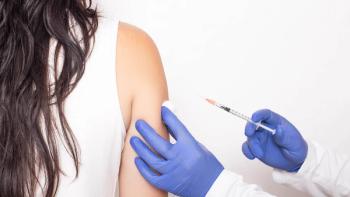
Scientists Develop New Vaccine for Lassa Fever and Rabies
A new investigational vaccine, LASSARAB, shows promise for use against Lassa fever and rabies.
A new investigational vaccine, LASSARAB, which was designed to protect against Lassa fever and rabies, shows promise in preclinical testing, according to new research published in NatureCommunications, according to the National Institutes of Health (NIH) in an Oct. 11, 2018 press release.
The inactivated recombinant vaccine candidate was developed and tested by scientists at Thomas Jefferson University in Philadelphia; the University of Minho in Braga, Portugal; the University of California, San Diego; and the National Institute of Allergy and Infectious Diseases (NIAID), part of NIH.
The vaccine uses a weakened rabies virus vector into which the research team inserted genetic material from Lassa virus so that the vaccine expresses surface proteins from both the Lassa virus and the rabies virus. These surface proteins prompt an immune response against both Lassa and rabies viruses, the researchers reported. The recombinant vaccine was then inactivated to “kill” the live rabies virus used to make the carrier.
There are currently no approved Lassa fever vaccines, according to NIH. Although Lassa fever is often a mild illness, some serious symptoms can manifest, such as hemorrhage and shock. The overall Lassa virus infection case-fatality rate is about 1%, according to the World Health Organization (WHO), but that rate rises to 15% for patients hospitalized with severe cases of Lassa fever. The Lassa virus is contracted through contact with infected Mastomys rats and through exposure to an infected person’s bodily fluids. Lassa fever is endemic to West Africa where these rats are common. In 2018, Nigeria experienced its largest-ever Lassa fever outbreak, with
Africa is also at high risk for human rabies. The WHO estimates that
The newly published findings show that, when administered with glucopyranosyl lipid adjuvant-stable emulsion (GLA-SE) adjuvant, an immune response-stimulating protein, LASSARAB elicits antibodies against Lassa virus and rabies virus in mouse and guinea pig models. The vaccine also protected guinea pigs from Lassa fever after being exposed to the virus 58 days after vaccination.
Prior research indicated that an antibody-mediated immune response is not correlated with protection from Lassa fever, the authors of the research noted. However, the new findings show that high levels of non-neutralizing immunoglobulin G (IgG) antibodies that bind to the Lassa virus surface protein correlate with protection against Lassa virus. Levels of this type of antibody could potentially be a Lassa-fever correlate of protection used to determine vaccine efficacy, according to the authors. They note the next step is to evaluate the experimental vaccine in nonhuman primates before advancing to human clinical trials.
Source:
Newsletter
Stay at the forefront of biopharmaceutical innovation—subscribe to BioPharm International for expert insights on drug development, manufacturing, compliance, and more.




